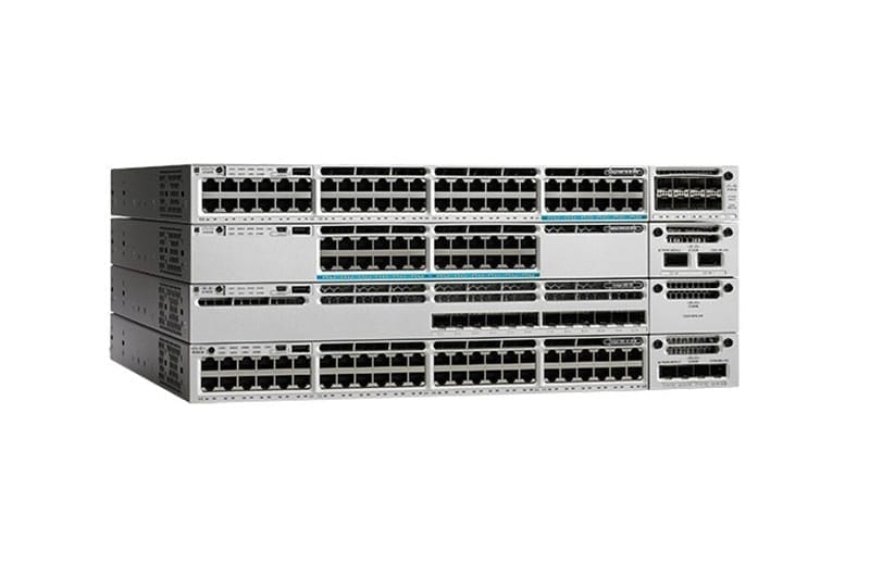How to Buy Networking Equipment in the UK: A Comprehensive Guide
Networking equipment is essential for both businesses and home environments. Whether setting up a small office, managing a large business network, or establishing a home network, choosing the right equipment can be daunting. In the UK, the variety of networking solutions can seem overwhelming

Networking equipment is essential for both businesses and home environments. Whether setting up a small office, managing a large business network, or establishing a home network, choosing the right equipment can be daunting. In the UK, the variety of networking solutions can seem overwhelming. Here’s a detailed guide on how to buy networking equipment in the UK, covering everything from essential components to factors that can help you make the best choice for your needs.
1. Understanding the Basics of Networking Equipment
Before purchasing networking equipment, it is essential to understand the primary devices and components involved in network setup. The primary categories include:
- Routers: Devices that connect different networks and route data packets between them. Routers can be wired or wireless, with features ranging from basic routing to advanced security options.
- Switches: Hardware that allows multiple devices to connect within a local network. Switches come in various configurations based on the number of ports and their capacity for data handling.
- Modems: Essential for connecting to an internet service provider (ISP) and enabling internet access within your network.
- Access Points: Devices that extend the range of a wireless network. They are crucial in providing strong Wi-Fi coverage across larger spaces or multi-story buildings.
- Firewalls: Security tools that monitor and control incoming and outgoing network traffic, protecting your network from potential threats.
- Cables and Connectors: A reliable setup needs quality cables and connectors. From Ethernet cables (such as Cat5e, Cat6, Cat7) to fiber optics, choosing the right cable can impact network speed and reliability.
2. Key Considerations When Buying Networking Equipment in the UK
When selecting networking equipment, there are several factors to consider to ensure you are making the best choice for your environment.
a. Network Size and Complexity
Assess the size of your network. Small networks may only require a router and a few switches, while more extensive setups (especially for businesses) may need advanced equipment like managed switches, dedicated firewalls, and multiple access points.
b. Speed and Bandwidth Requirements
Evaluate your speed and bandwidth needs. A household may function well with a basic router that supports speeds up to 1 Gbps, but a business with high data traffic may need a router with a higher capacity and support for multi-gigabit speeds.
c. Future Scalability
Invest in equipment that can scale with your growing network needs. For instance, modular switches allow you to add additional ports or features as your network expands, saving you money and time in the long term.
d. Budget Constraints
Budget is always a critical factor. Networking equipment can vary significantly in price, from budget-friendly consumer-grade devices to high-end enterprise solutions. Determine your budget and balance it with your equipment needs.
e. Brand and Warranty Support
Certain brands are known for their reliability, support, and warranty options. In the UK, trusted brands like Cisco, Netgear, Ubiquiti, TP-Link, and Huawei provide robust networking solutions. Checking warranty policies and after-sales support can provide peace of mind with your purchase.
3. Types of Networking Equipment Available in the UK
The UK market offers a broad range of networking equipment, catering to both consumer and enterprise needs. Here’s a breakdown of the options:
a. Consumer-Grade Equipment
Ideal for home and small office use, consumer-grade networking equipment is affordable and user-friendly. Brands like TP-Link, Netgear, and Asus are common in this category, offering basic routers, modems, and switches designed for easy setup and functionality.
b. Enterprise-Grade Equipment
For businesses and larger networks, enterprise-grade equipment is essential. High-performance routers, firewalls, and managed switches from brands like Cisco, Juniper Networks, and Aruba Networks switch are preferred in these environments. These devices offer superior security, greater control, and high scalability.
c. Refurbished and Used Equipment
Refurbished networking equipment is an affordable alternative for businesses on a budget. Many reputable retailers offer certified refurbished devices with warranties, allowing you to purchase high-quality, previously owned equipment at a fraction of the cost.
4. Top Retailers for Networking Equipment in the UK
Finding the right retailer is essential for quality assurance and after-sales support. Here are some trusted UK sources for purchasing networking equipment:
a. Online Retailers
- Amazon UK: Offers a wide range of options with customer reviews, helping you find the best product for your needs.
- eBuyer: Known for its selection of consumer and business networking equipment, often at competitive prices.
- Box.co.uk: Provides a variety of networking devices, including routers, switches, and firewalls from reputable brands.
b. Specialized Networking Equipment Stores
- Insight UK: Specializes in enterprise-grade solutions and provides excellent support for business buyers.
- IT4Profit: Known for refurbished and second-hand equipment, making it a good choice for budget-conscious buyers.
- BroadbandBuyer: This retailer offers a range of options tailored for both home and business users, with helpful customer support and technical advice.
c. Local Electronics Stores
Some well-established electronics stores also offer networking equipment store in UK and can provide in-person advice on the best equipment. Examples include Currys and John Lewis, which stock popular consumer-grade equipment and offer return options.
5. Installation and Configuration Tips
After purchasing the equipment, it is crucial to set it up effectively to maximize performance. Here are some basic tips:
- Place Your Router Centrally: For optimal Wi-Fi coverage, place your router in a central location. Avoid placing it near walls or large metal objects that could obstruct the signal.
- Secure Your Network: Enable WPA3 or WPA2 encryption on your Wi-Fi network to protect against unauthorized access. Strong passwords are essential for security.
- Configure Your Network Settings: Adjust bandwidth settings for specific devices or users if supported by your router. This allows you to manage network traffic and prevent bottlenecks.
- Regular Firmware Updates: Many networking devices receive firmware updates that improve performance and security. Check for updates regularly to keep your network secure.
6. Tips for Making a Smart Purchase
To make the most of your investment in networking switches in uk, consider the following purchasing tips:
- Compare Models and Features: Use comparison tools or check reviews to evaluate different models. This ensures that the equipment meets your technical needs and is reliable.
- Evaluate Energy Efficiency: Many modern networking devices come with power-saving modes. Choosing energy-efficient equipment can help reduce electricity costs over time.
- Leverage Sales and Discounts: Keep an eye on seasonal sales events like Black Friday or Cyber Monday to get discounts on high-quality networking equipment.
What's Your Reaction?














![Noots Focus Reviews [Truth Exposed 2025]!](https://news.bangboxonline.com/uploads/images/202501/image_430x256_678e3b94881a1.jpg)










![[Latest] Recycled PET Market to Cross $13.87 Billion in Total Revenue by 2030 | Riding on a Strong 5.7% CAGR](https://news.bangboxonline.com/uploads/images/202408/image_430x256_66d155cde3765.jpg)